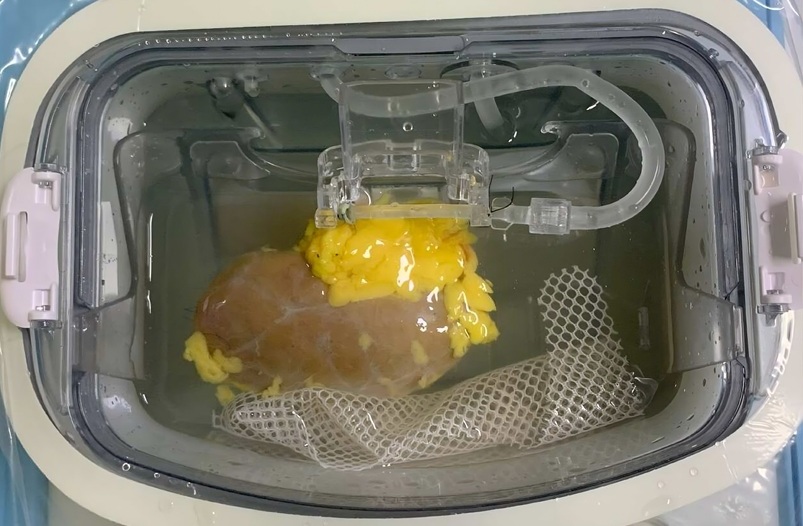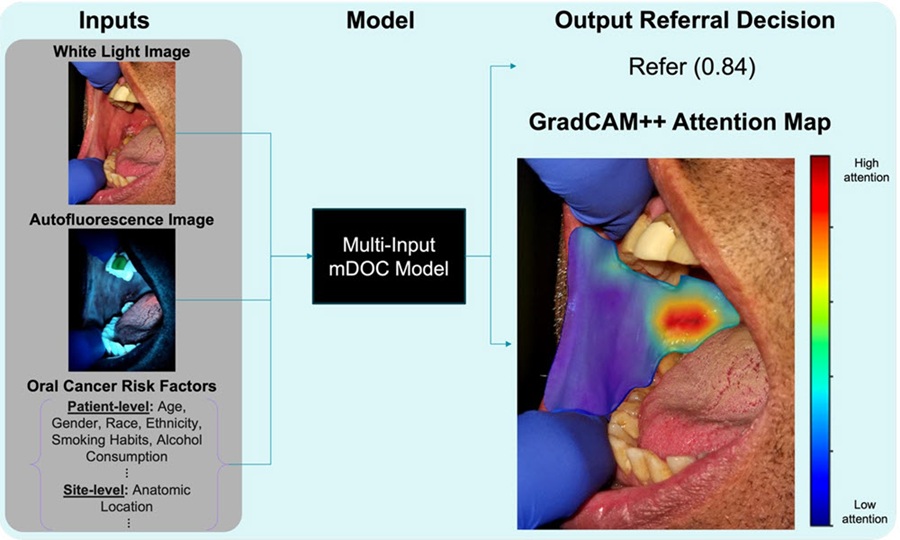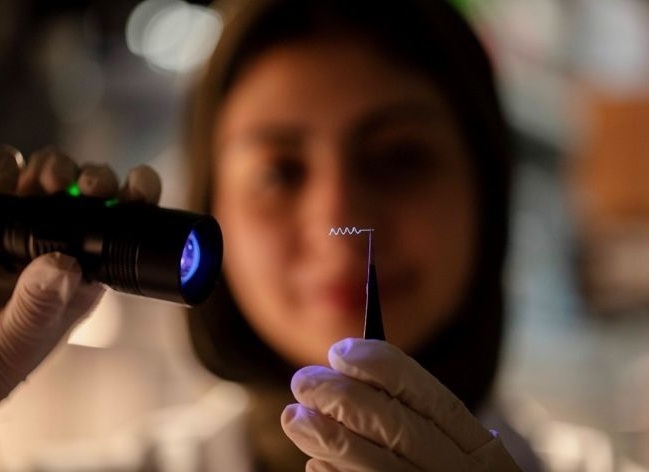Digital Avatar Helps Plan Personalized Therapies
|
By HospiMedica International staff writers Posted on 23 Jul 2019 |

Image: Research suggests virtual manikin avatars could help plan medical treatments (Photo courtesy of Empa).
A virtual doppelganger that is programmed with a patient’s physiological data could aid in providing a personalized prognosis of treatment.
Under development at the Swiss Federal Laboratories for Materials Science and Technology (Empa; Dübendorf, Switzerland), the digital twin represents a complex multi-physical skin model fed with data from non-invasive sensor systems attached to the human skin. The ostensible transdermal manikin and a linked-up computer model are then used to simulate human physiological responses to drugs and medicines, such as changes in skin temperature or perspiration rate, which can then be analyzed in order to enable precise and personalized dosage of the active agents.
The computer modeling of the digital doppelganger also factors in a patient’s skin characteristics. For example, the active agent will be absorbed differently depending on where the plaster is attached to the body, or whether the drug is administered to a sun-tanned athlete, an elderly lady with pale, papery skin, or a soft-skinned newborn. Drug dosage can thus be controlled precisely thanks to a tailored, time-dependent rate of expulsion. In the future, the manikins system will be used to set up the considerably more complex digital human doppelgangers, which are governed by a larger number of variables. The avatar was described on July 3, 2019, in CQFD.
“In medicine, people dream of complete in silico doppelgangers, which predict how a person will age or how an artificial joint will wear in the body. Using an in silico doppelganger, we’re able to respond to individual patients much more precisely,” said Professor Thijs Defraeye, PhD, of the Empa Biomimetic Membranes and Textiles lab. “As an extra benefit, we expect to be able to reduce the dosage (of painkillers, for instance) to such an extent that the patient is supplied with just the right amount.”
Related Links:
Swiss Federal Laboratories for Materials Science and Technology
Under development at the Swiss Federal Laboratories for Materials Science and Technology (Empa; Dübendorf, Switzerland), the digital twin represents a complex multi-physical skin model fed with data from non-invasive sensor systems attached to the human skin. The ostensible transdermal manikin and a linked-up computer model are then used to simulate human physiological responses to drugs and medicines, such as changes in skin temperature or perspiration rate, which can then be analyzed in order to enable precise and personalized dosage of the active agents.
The computer modeling of the digital doppelganger also factors in a patient’s skin characteristics. For example, the active agent will be absorbed differently depending on where the plaster is attached to the body, or whether the drug is administered to a sun-tanned athlete, an elderly lady with pale, papery skin, or a soft-skinned newborn. Drug dosage can thus be controlled precisely thanks to a tailored, time-dependent rate of expulsion. In the future, the manikins system will be used to set up the considerably more complex digital human doppelgangers, which are governed by a larger number of variables. The avatar was described on July 3, 2019, in CQFD.
“In medicine, people dream of complete in silico doppelgangers, which predict how a person will age or how an artificial joint will wear in the body. Using an in silico doppelganger, we’re able to respond to individual patients much more precisely,” said Professor Thijs Defraeye, PhD, of the Empa Biomimetic Membranes and Textiles lab. “As an extra benefit, we expect to be able to reduce the dosage (of painkillers, for instance) to such an extent that the patient is supplied with just the right amount.”
Related Links:
Swiss Federal Laboratories for Materials Science and Technology
Channels
Critical Care
view channel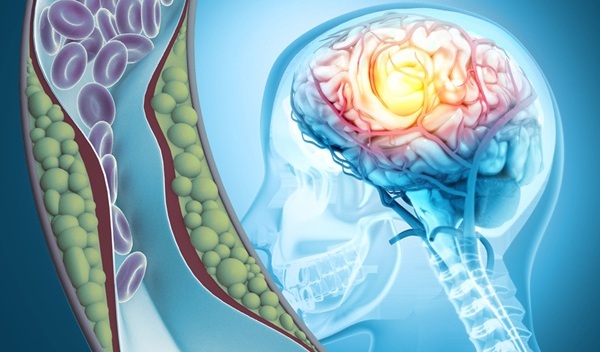
Light-Based Technology to Measure Brain Blood Flow Could Diagnose Stroke and TBI
Monitoring blood flow in the brain is crucial for diagnosing and treating neurological conditions such as stroke, traumatic brain injury (TBI), and vascular dementia. However, current imaging methods like... Read more
AI Heart Attack Risk Assessment Tool Outperforms Existing Methods
For decades, doctors have relied on standardized scoring systems to assess patients with the most common type of heart attack—non-ST-elevation acute coronary syndrome (NSTE-ACS). The GRACE score, used... Read moreSurgical Techniques
view channel
Minimally Invasive Endoscopic Surgery Improves Severe Stroke Outcomes
Intracerebral hemorrhage, a type of stroke caused by bleeding deep within the brain, remains one of the most challenging neurological emergencies to treat. Accounting for about 15% of all strokes, it carries... Read more
Novel Glue Prevents Complications After Breast Cancer Surgery
Seroma and prolonged lymphorrhea are among the most common complications following axillary lymphadenectomy in breast cancer patients. These postoperative issues can delay recovery and postpone the start... Read morePatient Care
view channel
Revolutionary Automatic IV-Line Flushing Device to Enhance Infusion Care
More than 80% of in-hospital patients receive intravenous (IV) therapy. Every dose of IV medicine delivered in a small volume (<250 mL) infusion bag should be followed by subsequent flushing to ensure... Read more
VR Training Tool Combats Contamination of Portable Medical Equipment
Healthcare-associated infections (HAIs) impact one in every 31 patients, cause nearly 100,000 deaths each year, and cost USD 28.4 billion in direct medical expenses. Notably, up to 75% of these infections... Read more
Portable Biosensor Platform to Reduce Hospital-Acquired Infections
Approximately 4 million patients in the European Union acquire healthcare-associated infections (HAIs) or nosocomial infections each year, with around 37,000 deaths directly resulting from these infections,... Read moreFirst-Of-Its-Kind Portable Germicidal Light Technology Disinfects High-Touch Clinical Surfaces in Seconds
Reducing healthcare-acquired infections (HAIs) remains a pressing issue within global healthcare systems. In the United States alone, 1.7 million patients contract HAIs annually, leading to approximately... Read moreBusiness
view channel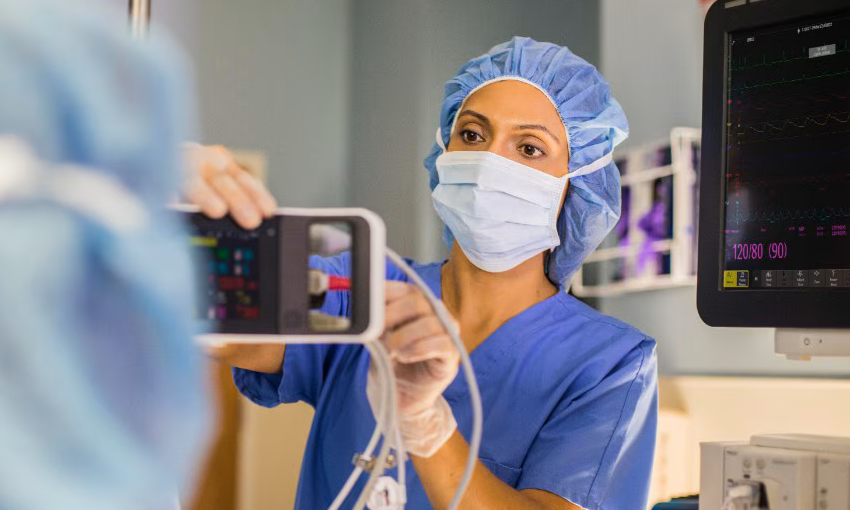
Philips and Masimo Partner to Advance Patient Monitoring Measurement Technologies
Royal Philips (Amsterdam, Netherlands) and Masimo (Irvine, California, USA) have renewed their multi-year strategic collaboration, combining Philips’ expertise in patient monitoring with Masimo’s noninvasive... Read more
B. Braun Acquires Digital Microsurgery Company True Digital Surgery
The high-end microsurgery market in neurosurgery, spine, and ENT is undergoing a significant transformation. Traditional analog microscopes are giving way to digital exoscopes, which provide improved visualization,... Read more
CMEF 2025 to Promote Holistic and High-Quality Development of Medical and Health Industry
The 92nd China International Medical Equipment Fair (CMEF 2025) Autumn Exhibition is scheduled to be held from September 26 to 29 at the China Import and Export Fair Complex (Canton Fair Complex) in Guangzhou.... Read more











